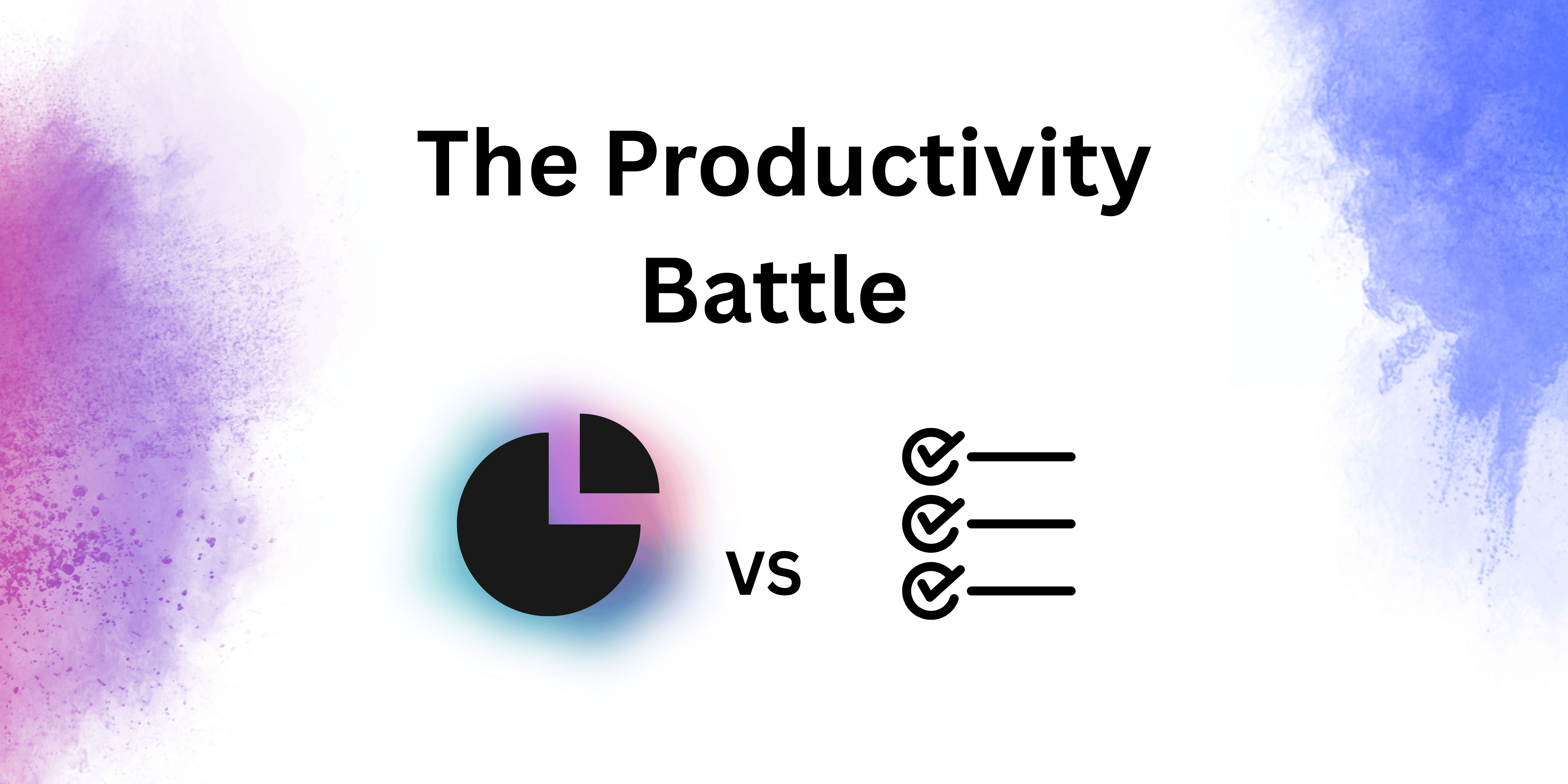Why Time Blocking Beats a To-Do List Most Days
Time blocking is a powerful tool for managing your day. It involves scheduling specific blocks of time for tasks. This method can transform how you approach your daily activities.
Unlike traditional to-do lists, time blocking allocates time slots for each task. This reduces the tendency to procrastinate. It also helps in minimizing distractions.
For individuals with ADHD, time blocking offers structure and clear expectations. It breaks tasks into manageable chunks. This makes it easier to focus and complete tasks.
Time blocking is not just for those with ADHD. It benefits anyone looking to improve productivity. It encourages realistic goal setting by visualizing time constraints.
Digital tools enhance time blocking's effectiveness. Apps and planners make it accessible and customizable. They offer features like reminders and notifications.
Time blocking can balance work and personal life. It clearly defines time for each. This method is flexible and can adjust as priorities change.
Whether you're a student or a professional, time blocking can help. It supports academic success and work-life balance. Embrace time blocking to transform your productivity.
What Is Time Blocking? (And Why It Matters)
Time blocking is a strategy for organizing tasks by assigning them dedicated time slots. This method helps in clearly defining when each task will be completed. By doing so, it provides a structured approach to managing daily activities.
With time blocking, your day is divided into segments, each devoted to specific tasks or activities. This minimizes the chaos of multitasking. Instead, focus remains on one task at a time, boosting efficiency.
The beauty of time blocking lies in its flexibility. You can adjust the blocks as per changing needs or priorities. It's a dynamic system that evolves with your requirements.
- Reduces decision fatigue
- Enhances concentration
- Encourages efficient use of time
For those juggling multiple responsibilities, time blocking becomes even more crucial. It helps in visualizing how you spend your time. With this clarity, it becomes easier to identify and eliminate time-wasters.
Moreover, time blocking isn't just about work. It ensures that personal and leisure time are also accounted for, fostering a well-balanced life.
The Science Behind Time Blocking: Why It Works
Time blocking draws support from cognitive psychology principles. It lessens decision fatigue, a common productivity drain. When tasks are pre-scheduled, decision-making reduces.
Focus and productivity also improve through this method. Human brains thrive on routine and predictability. Time blocking capitalizes on this by minimizing distractions.
Studies show multitasking hinders efficiency. Time blocking counters this by dedicating time to single tasks. This method emphasizes one activity, fostering deeper focus.
- Provides structure, reducing uncertainty
- Prioritizes tasks, making goal achievement easier
- Eliminates the chaos of multitasking
Time blocking also promotes better time management. By visualizing tasks, you can allocate time wisely. This helps in avoiding over-commitment and stress.
Ultimately, time blocking aligns work patterns with how our brain best functions. By creating a predictable environment, it nurtures productivity and clarity. This makes time blocking not just a tool, but an essential strategy.
Time Blocking vs. To-Do Lists: A Side-by-Side Comparison
When comparing time blocking to traditional to-do lists, several differences emerge. Time blocking assigns specific slots for tasks. In contrast, to-do lists often result in a sprawling list with no timeline.
To-do lists can create confusion. You might not know where to start or how much time each task requires. Time blocking, however, forces you to allocate exact durations for each activity.
- Time Blocking: Fixed time slots for tasks, structure and predictability, reduces procrastination
- To-Do Lists: Vague timelines for tasks, lack of structure, potential for procrastination
Time blocking promotes realistic goal setting. By scheduling tasks, you see your day's constraints and plan accordingly. To-do lists often lead to overly optimistic estimates, resulting in unfinished tasks.
The focus that time blocking fosters is another key advantage. Concentrating on one task at a time minimizes distractions, something to-do lists struggle with.
Some people find crossing off items on to-do lists satisfying. However, this can encourage adding easy tasks for a dopamine hit. Time blocking makes every task meaningful by allocating purpose-driven time.
Why Time Blocking Is a Game Changer for ADHD and Neurodivergent Brains
Time blocking can transform how individuals with ADHD approach tasks. It provides structure and clarity where chaos often reigns. By allocating specific time blocks, it minimizes overwhelming feelings from endless to-do lists.
Neurodivergent brains thrive on structure. Time blocking creates a predictable environment. It helps maintain focus, as each task has a designated start and end.
The ability to see the whole day planned visually is beneficial. A colorful planner or an ADHD digital planner can make a huge difference.
- Reduces Distraction: Helps in staying on task.
- Increases Focus: Allocates dedicated time for each activity.
- Enhances Routine: Establishes daily patterns.
Time blocking also aids in managing energy levels. By balancing demanding and easy tasks, it reduces burnout, which is crucial for ADHD management.
A timebox planner can be an excellent tool here. It segments tasks into chunks, allowing for frequent shifts in focus, which suits many neurodivergent people.
Moreover, integrating it with a visual schedule app can enhance organization. Apps offer reminders and notifications that keep you on track.
Unlike to-do lists, time blocking defines clear expectations. It conveys when to move from one task to another, reducing decision fatigue.
The consistent practice of time blocking can improve productivity. It fosters a sense of accomplishment and reduces anxiety by providing tangible progress indicators.
How to Start Time Blocking: Step-by-Step Guide
Getting started with time blocking may seem daunting at first, but it's quite straightforward. A clear, step-by-step approach can simplify the process significantly.
First, identify all the tasks you need to accomplish. List them without overthinking details. The aim here is a comprehensive view of your responsibilities.
Next, determine their priority. High-priority tasks should be tackled during peak energy hours. Knowing when you're most productive helps in scheduling effectively.
Create a time blocking planner by dividing your day into blocks. Consider early morning, late morning, afternoon, and evening as broad categories. Each block should align with your personal energy levels.
Allocate tasks to each block based on their priority. Keep it realistic; overloading blocks leads to burnout and stress. Include breaks and downtime to recharge.
Here's a simple example:
- Morning (8 AM - 10 AM): High-priority tasks
- Late Morning (10:30 AM - 12 PM): Medium-priority tasks
- Afternoon (1 PM - 3 PM): Low-priority and meetings
- Evening (3:30 PM - 5 PM): Review and planning
Experiment with different duration for each block. Typically, 30-to-60-minute slots work well, but adjust according to task complexity.
Consider using digital planning tools. Apps like Google Calendar for long term planning and a dedicated digital time block planner like Chunk that can integrate seamlessly, allowing for easy adjustments and reminders.
Review your progress regularly. End each day by assessing what you've accomplished, and tweak tomorrow's schedule as necessary.
Finally, stay flexible. Life happens, and plans must be adjustable. Time blocking is most effective when it's a guide, not a rigid schedule.
Advanced Time Blocking Techniques: Task Batching, Day Theming, and Time Boxing
Once you're comfortable with basic time blocking, exploring advanced techniques can level up your productivity. These approaches offer more control and nuance in managing time. Be caeful to remember that these are approaches are more niche and can boost productivity for some or overcomplicated it for others so it's important to find what works for you.
Task batching involves grouping similar tasks to minimize context switching. By focusing on related activities, you can reduce downtime and increase efficiency. For example, batch together all communication tasks like emails and calls into a single block. Using task colours is a great way to visualise this.
Day theming dedicates entire days to specific types of work or projects. You can use your calendar to note what theme each day has and then when it comes to timeblocking you block out all the tasks that fit the theme of the day. This reduces cognitive load as you immerse yourself in one theme. Many entrepreneurs, for instance, reserve Mondays for planning, leaving other days for execution.
- Example Task Batching: Emails (blue): 9:00 AM - 10:00 AM, Meetings (red): 11:00 AM - 1:00 PM
- Example Day Theming: Monday: Content creation, Tuesday: Marketing strategy
Balancing these techniques involves experimentation. Each method has unique benefits, and personal preferences will guide your choices.
Advanced time blocking requires discipline, but it can be incredibly rewarding. When effectively implemented, these strategies streamline your workday and prevent overwhelm.
Choosing the Right Tools: Planners, Apps, and Templates for Every Style
Effective time blocking hinges on the right tools. Choosing a planner or app that aligns with your style is crucial.
For a hands-on approach, physical planners can provide tangibility. A minimal planner or colorful planner may suit your needs, offering visual engagement. These are simple but often lack the urgency or structure that comes with a timer and notifications/alerts.
A good digital time block planner offers flexibility and seamless synchronization across your workflow. For example, Chunk allows you to plan your week and meetings through your calendar, then with one click syncs to help you time block your day around your existing schedule.
Some of the best digital planners include features like notifications, templates and routines and integration with calendars, which enhance time management.
For individuals with ADHD, finding the right focus management tool can be crucial. ADHD digital planners and apps assist in maintaining focus, organization and reducing overwhelm.
- Popular Physical Planners: Vertical planner, Daily hourly planner, Weekly planner
- Top Digital Planner Apps: Chunk, Todoist, Akiflow, Timery.
Consider your lifestyle and habits. If you travel often, having a timeblocking tool that doesn't have to rely on a wifi connection is also crucial.
Experiment with different options to find what fits your rhythm and preferences. The goal is to seamlessly incorporate these tools into your routine.
Ultimately, the best tools are those you consistently use. Prioritize ease of use and adaptability over complex features that may go unused.
Conclusion: Why Time Blocking Wins Most Days
Time blocking often triumphs over traditional to-do lists. It offers structure without stifling creativity. This approach encourages a balanced blend of focus and flexibility.
By assigning tasks to specific time slots, procrastination decreases. This method cultivates a disciplined mindset. You gain clarity, knowing when tasks will be tackled.
Time blocking is particularly advantageous for those with ADHD. The clear, organized schedule it provides can enhance productivity and reduce overwhelm.
In a world filled with distractions, this strategy highlights the importance of intentional time management. Whether managing work projects or personal goals, time blocking proves to be an invaluable tool. As many have discovered, it holds the power to transform daily routines into well-orchestrated timelines.

